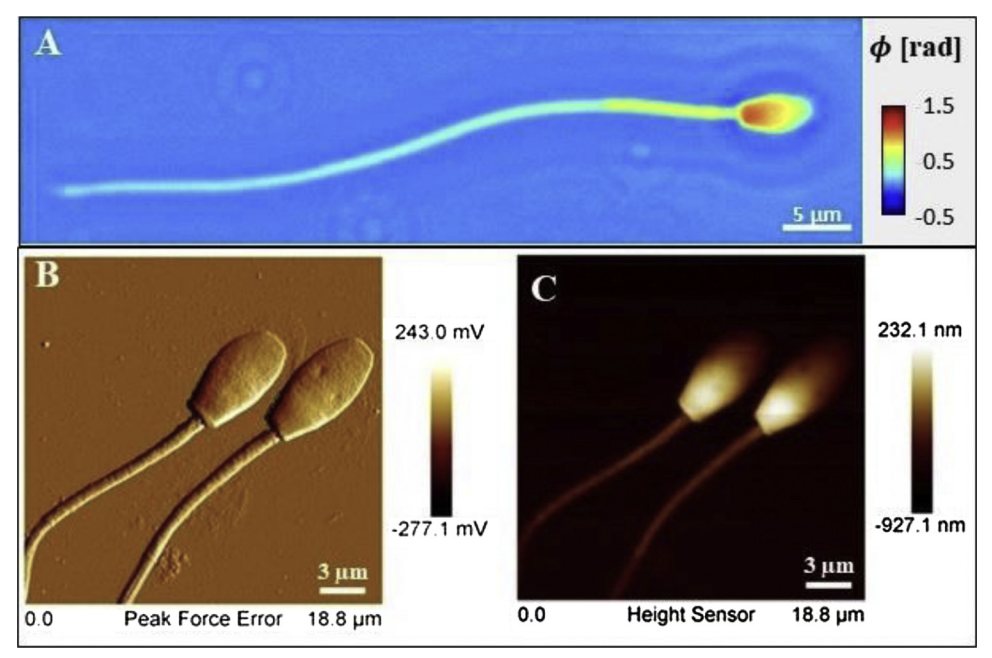HIGH-THROUGHPUT SPERM ASSAY USING LABEL-FREE MICROSCOPY: MORPHOMETRIC COMPARISON BETWEEN DIFFERENT SPERM STRUCTURES OF BOAR AND STALLION SPERMATOZOA
Marcello Rubessaa,b , Jean M. Feugange , Mikhail E. Kandeld , Sierra Schreibera , Jade Hesseea , Francesca Salernoa , Sascha Meyersa , Iwei Chuf , Gabriel Popescuc,d , Matthew B. Wheelera,b,c, *
Animal Reprod Science, 219, 106509 2020
![]()

The capacity for microscopic evaluation of sperm is useful for assisted reproductive technologies (ART), because this can allow for specific selection of sperm cells for in vitro fertilization (IVF). The objective of this study was to analyze the same sperm samples using two high-resolution methods: spatial light interference microscopy (SLIM) and atomic force microscopy (AFM) to determine if with one method there was more timely and different information obtained than the other. To address this objective, there was evaluation of sperm populations from boars and stallions. To the best of our knowledge, this is the first reported comparison when using AFM and high-sensitivity interferometric microscopy (such as SLIM) to evaluate spermatozoa. Results indicate that with the use of SLIM microscopy there is similar nanoscale sensitivity as with use of AFM while there is approximately 1,000 times greater throughput with use of SLIM. With SLIM, there is also allowace for the measurement of the dry mass (non-aqueous content) of spermatozoa, which may be a new label-free marker for sperm viability. In the second part of this study, there was analysis of two sperm populations. There were interesting correlations between the different compartments of the sperm and the dry mass in both boars and stallions. Furthermore, there was a correlation between the dry mass of the sperm head and the length and width of the acrosome in both boars and stallions. This correlation is positive in boars while it is negative in stallions.

